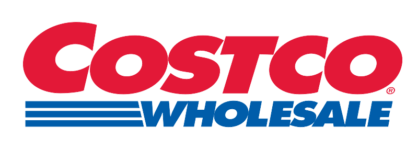
How Sunflower Oil is Made: A Comprehensive Guide
Sunflower oil is a popular cooking oil known for its light flavor and high smoke point, making it ideal for various culinary applications. But have you ever wondered how this golden liquid goes from sunflower seeds to your kitchen shelf? In this article, we will explore the intricate process of sunflower oil production, from seed selection to the final packaging.
Sunflower oil production involves several key steps, each crucial for ensuring the quality and safety of the final product. Let's break down the process into manageable stages.
The production of sunflower oil starts with the careful selection of high-quality sunflower seeds. These seeds are harvested and then subjected to a thorough cleaning process to remove impurities. This includes passing the seeds over magnets to eliminate metal traces and using sieves and destoners to remove dirt and other foreign materials.
After cleaning, the seeds undergo de-hulling, which involves removing the outer hulls. This step is essential because sunflower seeds contain about 20% to 30% hulls. De-hulling improves the quality of both the oil and the meal produced. The process typically involves cracking the seeds using centrifugal or pneumatic shellers, followed by winnowing to separate the hulls from the kernels.
Once de-hulled, the seeds are ground into a coarse meal. This increases the surface area for oil extraction. Hammer mills or grooved rollers are commonly used for this purpose. The ground meal is then heated to facilitate oil extraction while ensuring that impurities are minimized.
The heated meal is fed into a screw press, where it is subjected to high pressure (ranging from 60 kps to 950 kps). This process squeezes the oil out of the meal, producing a crude oil that still contains some impurities and residual oil in the cake.
To maximize oil yield, the remaining oil cake undergoes solvent extraction. Hexane, a volatile hydrocarbon, is the most commonly used solvent for this purpose. The hexane absorbs the remaining oil, creating a mixture known as oil-solvent miscella. After extraction, the hexane is removed from the oil through distillation, allowing it to be reused in the process.
The crude sunflower oil obtained through pressing and solvent extraction is not yet suitable for consumption. It undergoes a multi-stage refining process to eliminate impurities and enhance its quality. Key steps in this process include:
Once refined, the sunflower oil is ready for packaging. It is measured and packed into clean containers, such as bottles for retail or cans for export. Proper packaging is crucial for maintaining the oil's quality and extending its shelf life.
The process of making sunflower oil is a complex journey that involves several meticulous steps, from seed selection to final packaging. Understanding how sunflower oil is made not only enhances our appreciation for this versatile cooking oil but also informs our choices as consumers. Whether used for frying, baking, or dressing, sunflower oil remains a staple in kitchens around the world, thanks to the careful production methods that ensure its quality and safety.
Sunflower oil production begins with the careful selection of high-quality sunflower seeds, followed by a thorough cleaning process to remove impurities. This includes using magnets to eliminate metal traces and sieves to remove dirt.
After cleaning, the seeds are de-hulled to remove outer hulls, then ground into a coarse meal. The meal is heated and pressed to extract crude oil. Any remaining oil in the cake is then extracted using hexane, a solvent, to maximize yield.
Crude sunflower oil undergoes several refining steps, including degumming, neutralization, bleaching, deodorization, and optional winterization. These processes remove impurities, enhance flavor, and improve stability for consumption.
Once refined, sunflower oil is measured and packed into clean containers, such as bottles or cans. Proper packaging is essential for maintaining the oil's quality and extending its shelf life.

Where Can I Buy Organic Sunflower Oil for My Dog?
When it comes to the health and well-being of our furry friends, pet owners are increasingly turning to natural products. One such product that has gained popularity is organic sunflower oil. But where can you buy organic sunflowe...

How to Make Sunflower Seed Oil: A Comprehensive Guide
Sunflower oil is a versatile and healthy cooking oil that can be easily made at home. With its light flavor and high smoke point, sunflower oil is perfect for frying, sautéing, and even for salad dressings. In this article, we wil...

Can Cats Have Sunflower Oil? A Comprehensive Guide
As a cat owner, you may find yourself wondering about the safety of various foods and ingredients for your feline friend. One common question is whether cats can consume sunflower oil. This article will explore the benefits and ri...

Where Can I Buy Sunflower Oil Near Me?
Sunflower oil is a popular cooking oil known for its light flavor and high smoke point, making it a favorite among home cooks and professional chefs alike. If you're wondering where to buy sunflower oil near you, this article will...
Ready to source an ingredient?
Whether you’re struggling to find the perfect ingredient, racing against the clock, or simply don’t have the bandwidth to manage sourcing — we’ve got your back.
Get a Free Sourcing AuditSavings is BIG but the relationship value is MASSIVE! Glad we met when we did. Looking forward to building this partnership with you and David.
Yohan, here to say you’re one of my favorite suppliers. Aside from your high quality ingredients, you’re so great to work with. Thanks for all the help you’ve given us this year.
Working with Global Savors and Yohan has been very smooth when sourcing ingredients. They offer a great selection and and cost savings! Yohan has been awesome to work with and we look forward to continuing business together.






Global Savors is your trusted partner for seamless ingredient sourcing, offering end-to-end solutions that streamline procurement, simplify logistics, and elevate your supply chain efficiency.
View More News
© 2025 Copyrights by Global Savors. All Rights Reserved

